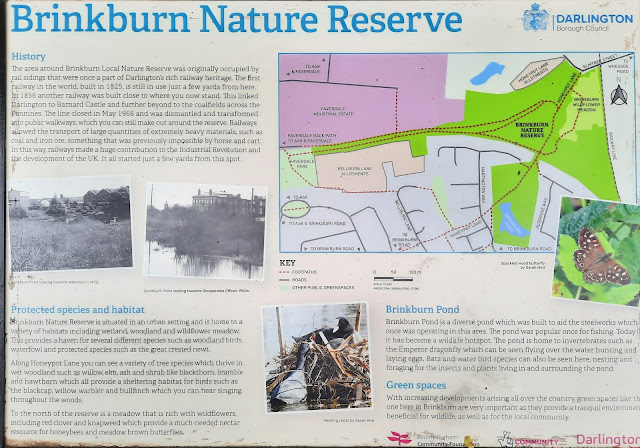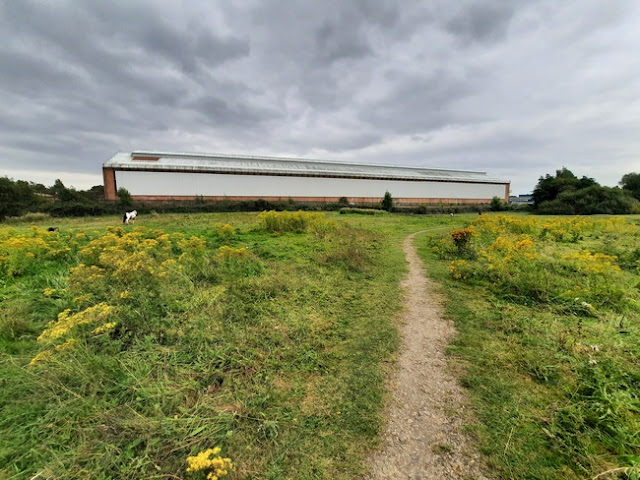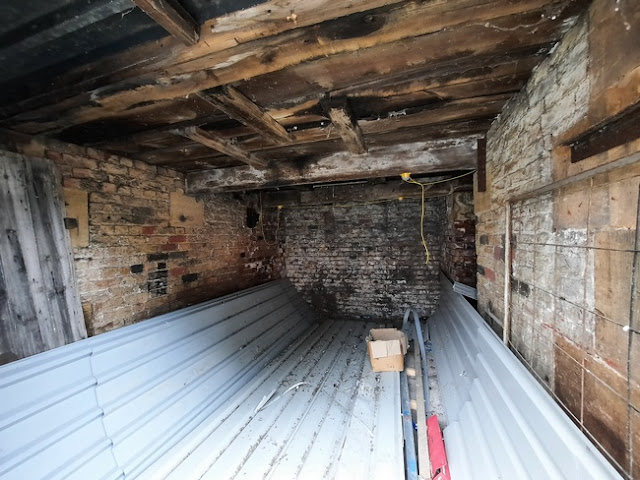A walk in and around the Hopetown museum site in Darlington.
Stockton and Darlington 200 Explores:
Hopetown (this page)
Ready for the 200th anniversary of the Stockton & Darlington Railway the Head of Steam Museum at Darlington North Road station has been revamped as the much bigger Hopetown. Hopetown was the name of the area that had the goods yards and engineering facilities around North Road station. The new museum incorporates a number of historic railway buildings around the site.
The first museum at the site was established in the 1970s when the station was becoming increasingly neglected after the former S&D route was reduced to a branchline to Bishop Auckland. The island platform under the station roof was divided with one part forming the museum building while trains between Darlington and Bishop Auckland pass through the site, calling at the remaining single unstaffed platform. Though North Road is not really disused it does have a page on the Disused Stations website containing a lot of information about the site and the lost routes it served.
1898 Map (top left of map)
Below - My Bishop Auckland train stopping at the remaining single platform. A bi-directional goods loop that passed the station site can be seen in the background.
Below - After stopping at the station the train passes under a fenced off span of station roof. The wall separating the museum from the surviving railway can be seen.
Below - A Bishop Auckland train passing through the original station, the museum is seen on the right with a glass wall providing an enclosed building for the exhibits.
Below - Entrance to the Hopetown site is through the former goods shed which now contains a welcome desk, museum shop and cafe.
Below - Map of the Hopetown site (click to enlarge).
Below - The North Road station buildings.
Below - A locomotive built a the nearby Robert Stephenson & Hawthorn works on display in the former platform. The north / west bound plaform was on the left whilst the fenced off platform face on the right was the access to the station buildings so passengers would not alight at this side, the fence is an original feature.
Below - A loco of the North Eastern Railway in to which the Stockton & Darlington was amalgamated.
Below - The original footbridge between the island platform and the station buildings.
Below - Stockton & Darlington locomotive Derwent. For many years this had been on display at Darlington's main railway station, situated on the former Great Northern route through the town.
Below - A Chaldron wagon, a common feature of the coal trains of the area.
Below - The former ticket office.
Below - A display about early railways.
Below - The station's toilet facilities.
Below - Displayed outside a Darlington built BR Class 37. The North Road Locomotive Works was situated to the north of the station site.
Below - The former S&DR carriage works. In recent years this was used to build replica A1 locomotive Tornado, the group that built it have moved to a purpose built works nearby to build P2 class replica Prince of Wales freeing this building up to become part of the museum complex.
Below - Items on display in the former Carriage Works.
Below - Returning to the former station site.
Below - A display of stone sleepers and a piece of miniature railway track from an earlier iteration of the museum.
Below - The bridge over the operational lines to the A1 locomotive trust's new works.
Below - A viewing gallery is provided to see work on P2 replica Prince of Wales and the proposed engines that will follow it.
After looking around the Hopetown site I visited a few other sights around the area. Just east of the museum is the Skerne Bridge that took the Stockton & Darlington Railway over the River Skerne, it still carries the Bishop Auckland branch line. When the S&DR first opened passenger facilities weren't provided but passengers were able to board and alight from trains on the east side of the crossing on the Great North Road, between the current station site and the Skerne Bridge.
Below - The Skerne Bridge.
Below - The bridge from the north side showing how it was later widened to four tracks with a metat span which has since been removed.
I then headed west along Albert Road and Bonomi Way, the latter has been built through the site of the Hopetown Goods Station.
Below - The new A1 Steam Locomotive Trust works.
Below - The new A1 Trust works with the Carriage Works in the background that the A1 trust previously used to construct A1 replica Tornado.
I headed north along Wescoe Road. To the north of Wescoe Road was the North Road Locomotive Works. The North Road Trade Park has been built on the site of the works. The rail entrances to the works crossed Wescoe Road where the road access to the retail park is now and to the south of William Street where a used car dealer is now located. The car dealership has a couple of buildings from the works but I didn't notice at the time.
Below - West of Wescoe Road a surviving building from the locomotive works is now in use with the Darlington Railway Preservation Society and the North Eastern Locomotive Preservation Society.
Below - Further north along Wescoe Road is the former Rise Carr Rolling Mill, still partly in use with British Steel.
Below - Former office building on the Rise Carr Rolling Mill.
Below - Turning left on Elmtree Street the retaining wall at the north end of the rolling mill site can be seen and the bridge that carried several tracks of railway over the road but now just carries the single track of the Bishop Auckland branch.
Just off Elmtree Street is a footpath along part of the former North Eastern Railway line to Bernard Castle and onwards to Tebay and Penrith.
The line had a triangular junction with the line that survives today, the site of the triangular junction is now the Brinkburn Nature Reserve.
Below - Information board from the nature reserve (click to enlarge).
Below - Looking east across the surviving side of the triangular junction is another view of the former Rise Carr Rolling Mill.
Below - The former junction to the north of North Road station, the fence is the boundary with the active railway line.
Below - Looking toward Barnard Castle from the former junction and some sleepers are still in situ.
Below - The wall on the left hand side of the trackbed is likely a remnant of the Whessoe Foundry.
Below - The former Stooperdale Junction on the west side of the triangle.
Below - Looking towards Barnard Castle, on the right is a gatepost at the site of the rail entrance to the Faverdale Wagon Works.
Below - Many of the buildings of the Faverdale Wagon Works survive as the Faverdale Industrial Estate.
The path continues up to where the A1(M) now crosses the former route, though now surrounded on both sides by recent housing development. Beyond the motorway most of the route has been ploughed into adjoining fields. I have previously visited parts of the route around Kirkby Stephen with my Eden Viaducts and Kirkby Stephen to Ravenstonedale walks.
I instead returned to Hopetown.
Below - The Working Mens Club where many of the local railway workers and factory workers would have met. On the right is the underpass taking Otley Terrace under the railway
Below - The Railway Hotel pub, now appartments on the corner of Alliance Street and Otley Terrace (opposite the Working Mens Club).
Below - Another view of the former S&D carriage works from outside the Hopetown museum site.
Below - Transport Trust red plaque on the former carriage work.
Below - South of the carriage works on Hopetown Lane is a former lime drop. Wagons of lime from the quarries across the Pennines would have been unloaded here.
Below - Looking through the wire fence into one of the cells in to which lime would have been dropped from hopper wagons on the track into the building above. Here it would be loaded in to carts, mainly for use in construction work.
Below - The south end of the building with what looks to be a bricked up entrance that would have allowed wagons to be propelled through the building once unloaded so that a few or more wagons could be handled at once.
From here I returned to North Road station (the little single platform bit that still sees passenger trains) for a train back to Darlington then home.
Further along the S&D I have also visited Shildon where a similar set up sees a museum (Locomotion) surrounded by historic railway infrastructure.



















































No comments:
Post a Comment